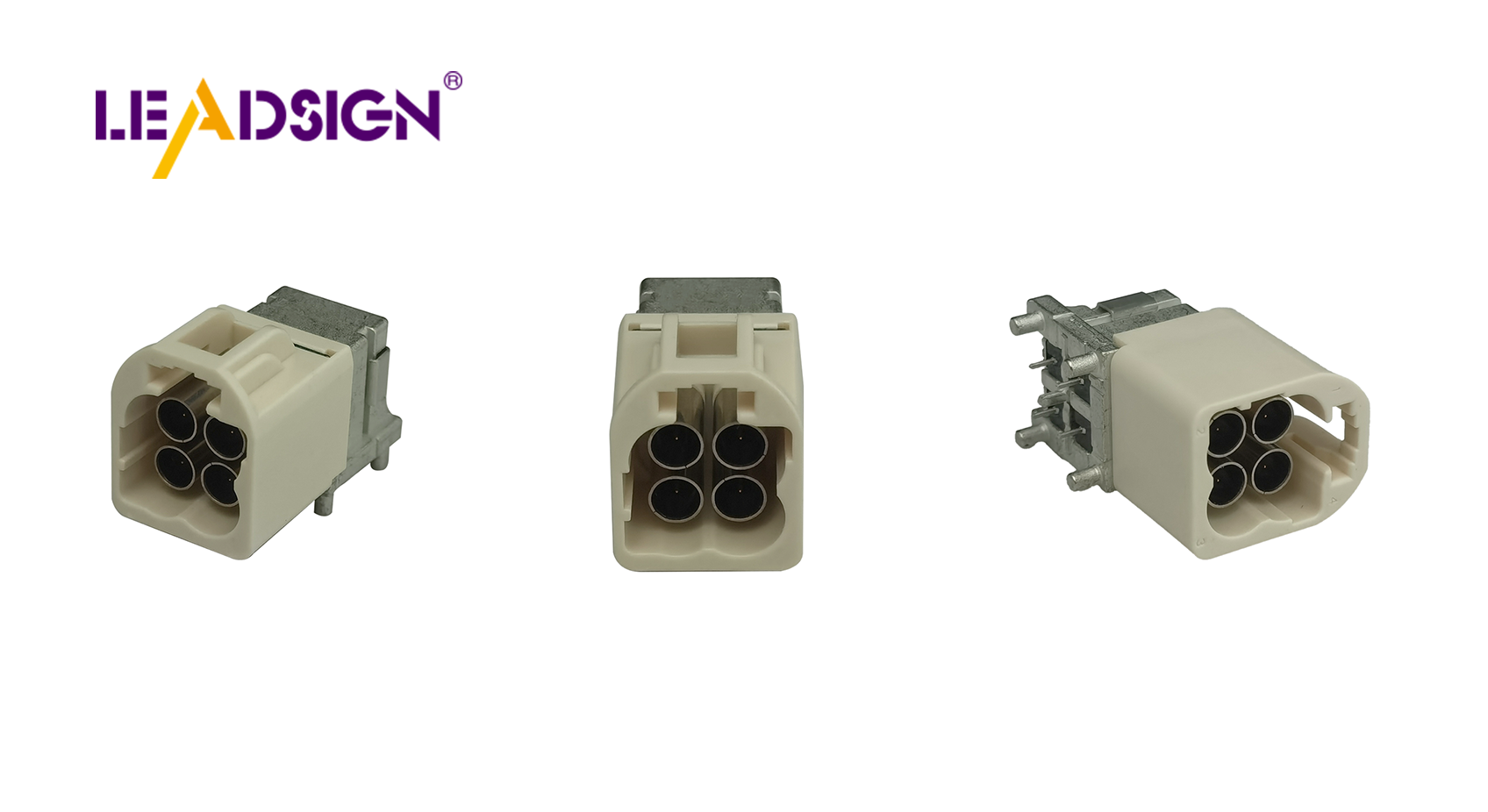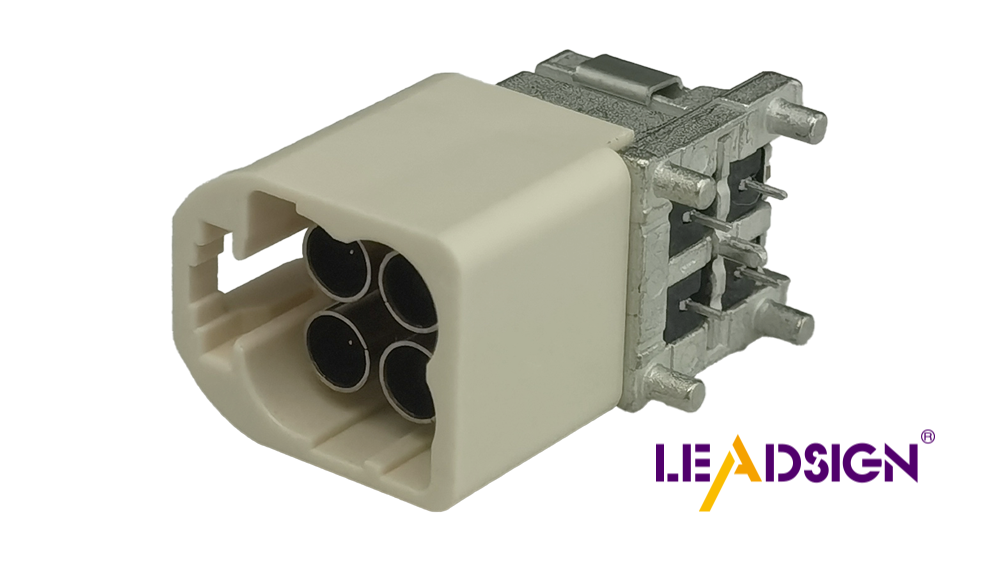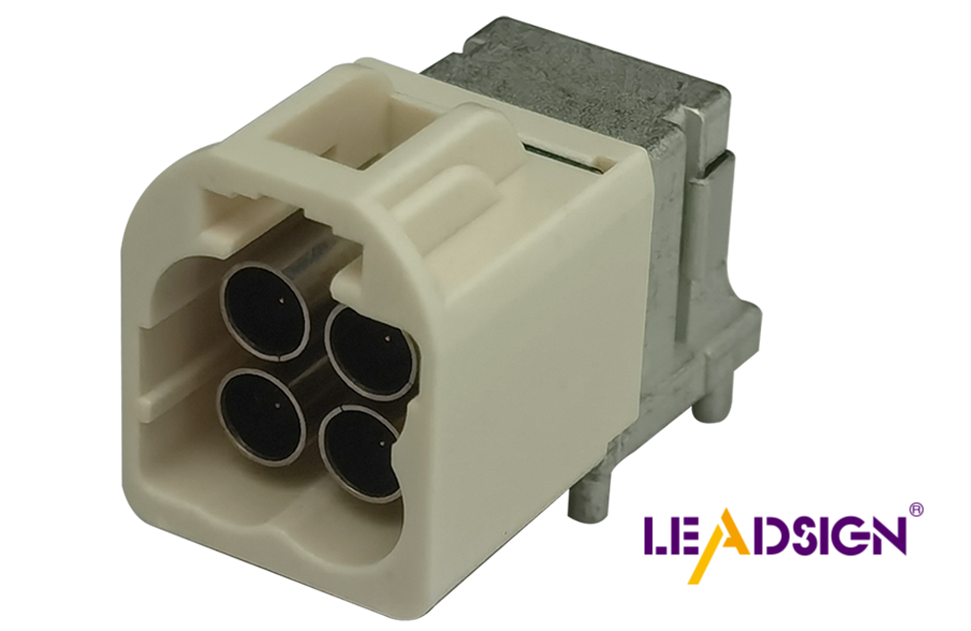Automotive Electrical Connectors Types Compared

Automotive electrical connectors types play a crucial role in vehicles. They ensure efficient electricity flow, which is essential for the smooth operation of cars. Most vehicles contain around 100 different types of connectors, highlighting their significance. As cars become more advanced, the demand for superior connectors increases. These connectors support various functions such as GPS and power supply. The different types of automotive electrical connectors are vital for maintaining vehicle safety and efficiency, particularly as we transition to electric and safer cars.
Types of Automotive Electrical Connectors

FAKRA Connectors
Description and Features
FAKRA connectors are a German standard used in cars. They work for many things like telematics, safety, GPS, and entertainment. These connectors also help with Bluetooth, keyless entry, and climate controls. They support radio antennas and sensors for self-driving cars too. FAKRA connectors can handle up to 6 GHz signals. Many companies sell them, showing they are popular.
Common Applications
FAKRA connectors are important in car systems. They help with telematics and safety by allowing easy data transfer. In GPS and entertainment systems, they send signals well. They also support Bluetooth and cellular links for better communication in cars. Keyless entry and climate control use these connectors to keep connections strong.
HFM Connectors
Description and Features
HFM connectors, or Mini-FAKRA, are smaller versions of FAKRA connectors. They fit where space is tight but need fast data rates. These can handle up to 28 Gb/s data speed. Type A mini-FAKRA manages up to 20 Gb/s data flow. Their small size makes them great for new car systems.
Common Applications
HFM connectors work in high-tech car parts like cameras, GPS, and self-driving tools. In driver help systems, they move data quickly and reliably. Fast infotainment systems use HFM for speed and efficiency too. Their tiny design fits easily into computer models in cars.
Other Connector Types
Description and Features
Besides FAKRA and HFM, there are other connector types in cars. Each has special features for different jobs. Some focus on being strong; others on handling high frequencies well.
Common Applications
Other connector types have many uses in cars too. They're found in engines needing strong parts or low-frequency tasks needing steady connections. Some excel at high-frequency jobs with clear signals, helping infotainment and safety work better.
Comparing Connectors
Size and Design
Smallness and Space Saving
Car connectors come in different sizes and shapes. FAKRA connectors are strong but big, good for places with lots of room. HFM connectors, or Mini-FAKRA, are tiny. They fit in small spots, perfect for new cars with many gadgets. Being small helps save space and makes cars lighter, which uses less fuel.
Different Designs
Connectors have different designs for car needs. FAKRA ones have colors and codes to connect right. HFM ones can change shape easily, great for new tech like self-driving cars needing many sensors.
Data Sending Abilities
Speed and Amount
Cars need fast data sending now. HFM connectors send data super fast up to 28 Gb/s, great for things like music systems and driving help tools. FAKRA is slower but works well for normal car stuff like GPS.
Keeping Signals Strong
Keeping signals clear is key for car connectors, especially in safety parts. Both FAKRA and HFM stop signal loss well. HFM is better at keeping signals clean, important for self-driving cars where data must be exact.
Frequency Use
Low-Frequency Jobs
For low-frequency jobs like engine controls, strength matters more than speed. FAKRA works well here, staying strong even when it’s tough outside.
High-Frequency Jobs
High-frequency jobs need special connectors that handle wide ranges. HFM does this best up to 20 GHz, perfect for smart car tech like radar systems.
Where Connectors Are Used
Car Entertainment Systems
Car entertainment systems are common in today's cars. They give music, maps, and phone features to drivers and passengers. These systems need connectors for fast connections. HFM connectors are great here because they handle data up to 28 Gb/s. This means smooth music and video streaming, plus live map updates. Their small size fits well in tight car dashboards.
FAKRA connectors help too in these systems. They support GPS and Bluetooth, making sure devices talk to each other well. Their strong build is good for cars where bumps and heat changes happen often.
Safety Systems
Car safety systems have improved a lot for better protection and avoiding crashes. They include things like smart cruise control, lane warnings, and parking help. In 2022, safety systems used over 26% of all car connectors, showing how important they are.
Connectors in safety systems must be reliable and work with many sensors and cameras. HFM connectors are perfect because they send data fast and fit in small spaces. They make sure safety data moves quickly so systems can act fast if needed.
FAKRA connectors also help by giving steady links for sensors and cameras. They manage signals up to 6 GHz, keeping data clear which is key for safety tools to work right. As cars get more advanced with new safety techs, the need for top-notch connectors will grow.
Benefits and Limitations
FAKRA Connectors
Advantages
Versatility: FAKRA connectors work in many car systems like GPS and entertainment. They are popular because they fit many uses.
Durability: These connectors last long in tough car conditions. They are strong against shaking and temperature changes.
Standardization: Being a German standard, FAKRA fits different cars easily, making them easy to use and fix.
Disadvantages
Size: FAKRA connectors are big, which makes them hard to use in small spaces of new cars.
Data Rate Limitations: They send data slower than newer ones like HFM, which is not good for fast data needs.
HFM Connectors
Advantages
Compact Design: HFM connectors, or Mini-FAKRA, are small and fit well in tight places of modern car systems.
High Data Rates: They can send data very fast up to 28 Gb/s, great for things like music systems and self-driving tools.
Space Efficiency: Their design saves space by 80%, helping make cars lighter and use less fuel.
Disadvantages
Cost: HFM's advanced tech makes them cost more than regular FAKRA connectors.
Complexity: Using HFM may need special skills and tools, making setup harder.
Other Connector Types
Advantages
Specialized Features: Some car connectors have special features for certain jobs like handling high frequencies or being extra strong.
Application-Specific Design: These are made for specific car needs, working best in engines or safety parts.
Disadvantages
Limited Versatility: Some types aren't as flexible as FAKRA or HFM, so they only work in certain areas.
Compatibility Issues: Non-standard ones might not fit all cars well, making it hard to connect them.
Case Studies
Smiths Interconnect has improved car testing with smart connectors that help with imaging links, showing how important connectors are today.
Examples from Leading Manufacturers

TE Connectivity
Notable Products
TE Connectivity is big in car connectors. Their AMP and DEUTSCH connectors are well-known. These connectors work well in tough places. AMP has many pins for complex wires, while DEUTSCH is strong against weather.
Industry Impact
TE Connectivity helps cars connect better. Their products help with fast data needed in modern cars. They make sure safety and entertainment systems work well, helping cars become more connected.
Molex
Notable Products
Molex makes many car connectors like Board-to-Board and Wire-to-Board. These are great for new cars needing compact connections. Board-to-Board is popular because it handles lots of electronics.
Industry Impact
Molex helps car parts connect easily. Their products support new car systems with fast links for music and safety tools. Molex's new ideas help make energy-saving and smart cars.
Aptiv
Notable Products
Aptiv, once Delphi, has many car connectors. Their high-speed data connectors and power systems stand out. These help manage power and data in modern cars.
Industry Impact
Aptiv improves car safety and connections. Their connectors help driver aids and entertainment features work together, focusing on safety and user fun. Aptiv's new ways shape future car tech, aiding the move to smarter vehicles.
Automotive electrical connectors are important in today's cars. FAKRA connectors work well for safety and telematics. HFM connectors are best for fast data in entertainment and self-driving cars. Other special connectors help with engines and high-frequency tasks.
As car technology changes, the focus will be on better connections and efficiency. Companies like TE Connectivity and Aptiv make new solutions for hybrid and electric cars, aiming for a safer, more connected future.
See Also
Essential Guide to HSD Connectors in Auto Sector
Significance of Fakra Auto Connectors in Modern Cars
Benefits of HFM Connectors in Auto Sector

